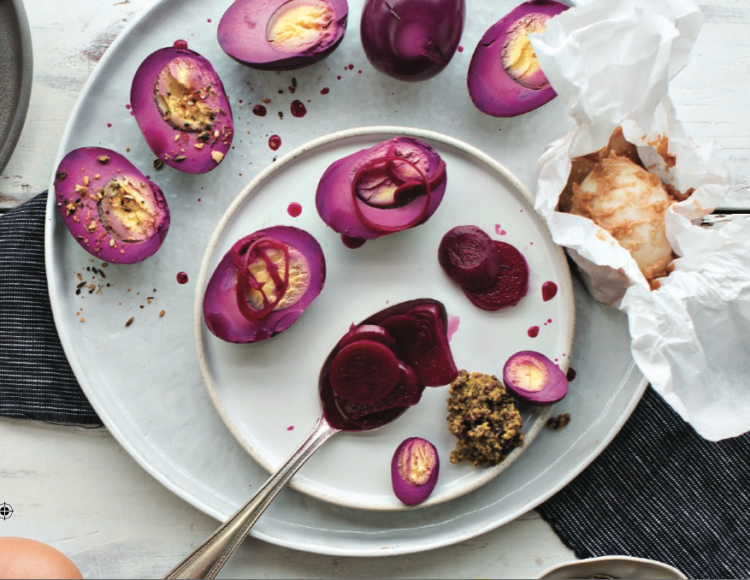
Fermentation by Dearbhla Reynolds
The microbiome is big news, it’s really, really big news, and yet we still don’t even know how big it is!
What this has to do with you is fundamental, as a healthy microbiome, which is your body’s bacterial profile, helps your body with just about every process, including helping you to digest your food, think clearly, have strong immunity and even maintain a healthy weight. Unfortunately, today, most of us have a microbiome which is out of balance. Many years of diets high in processed foods and sugar, vegetables sprayed with pesticides, consuming intensively raised meat and dairy products full of hormones and antibiotics, not to mention our own pill popping habits. It’s no wonder our gut health is imbalanced.
The good news is that you can change your gut microbiome literally within a day. With every forkful you have the opportunity to begin to change the population of your gut microbiome. For some more than others, this may be a more managed protocol. But there are some simple guidelines to improve your gut microbiome starting today.
It all starts with eating the right foods…and not stressing about it! Stress will undo all the lovely healing work proper nutrition will offer. Removing the sugar and processed foods from your diet will have to take centre stage if you wish for any efforts to come into effect.
Refined carbohydrates, sugar and processed foods get absorbed quickly into your small intestine without any help from your microbes, except for one. It feeds organisms like Candida Albican (one of the gut bad guys) which also attacks your intestinal wall and can lead to a systemic Candida infection. The empty energy of these processed foods means your gut microbes stay hungry so they begin snacking on the cells that line your intestines, causing what is called Leaky Gut. When your intestinal wall becomes leaky, particles of food enter your bloodstream, causing your immune system to attack them, and ultimately your own tissues. This leads to inflammation and whole cascade of conditions, including autoimmunity.
Get your carbohydrates from vegetables and low-sugar fruits. Eating a lot of leafy green vegetables will help plant your gut with healthy and diverse bacteria. Radishes, Jerusalem artichokes, leeks, jicama, asparagus, carrots, garlic and turmeric are all wonderful examples of prebiotics. Probiotics are good food for the bacteria hanging out in your gut. This leads me to my favourite topic of fermented foods.
Fermented foods introduce additional beneficial flora to the body, which helps bolster our existing colonies. It is important to include a variety of fermented foods, as it improves the diversity of flora living in your gut, which further bolsters gut health. The bacteria present in fermented foods provide helpful enzymes – which support digestion – they are essentially pre-digested having done a little of the work for us. Foods that have been cultured arrive to us slightly broken down which less work for the GI tract. This is digestion made easier.
Kimchi, Saurekraut, Kombucha, Kefir are all marvelous ways to eat your probiotics. My current favourite is miso, as I eye up a 1L jar of homemade miso which will take most of the year to ferment in my kitchen! It’s made by fermenting soybeans, rice or barley with a fungus called koji, which produces a silky smooth paste for use in soups and sauces. Miso makes everything taste better, especially eggs.
Try this recipe below and make half a dozen in one go and have them to snack on during the week.
Miso Eggs Recipe
Ingredients (*per egg)
- 2 tbsp white miso (I like clear springs or source foods miso)
- 1 tsp maple syrup
- 1 egg
Method
- Place your chosen number of eggs into a saucepan and completely submerge them in water. Include a good few centimetres of extra water. Turn the heat to high and wait for the water to boil. As soon as it does, cover the pot with a tightly fitting lid. Turn off the heat and set a timer for 10 minutes. After 10 minutes, remove from the pan with a slotted spoon and cool them off immediately by placing them in very cold water. The cold water not only makes them easier to peel, but it also stops the cooking and will prevent a grey ring from appearing around the yolk. Peel the eggs and leave whole.
- Mix the miso and maple syrup together very well to form a smooth paste. Spread the paste over the middle of a piece of cling film or a ziplock bag that’s big enough to wrap the egg in. Put one egg in the middle of the cling film and wrap it around the egg. Twist the plastic shut at the top and squeeze until the miso is completely covering the egg. Place in the fridge for at least five hours but up to one week.
- When you’re ready to use an egg, take off the cling film. The white of the egg should be a light to medium beige and the surface will be covered with a bit of miso. You can leave this on or wipe it off gently if you prefer.

Miso Eggs
Getting busy in the kitchen making your own fermented foods is something of a mental shift and definitely something to wedge into our already busy lives and in my case, messy kitchen. However, more products are accessible and readily available to buy which will get you started and give your gut flora the craving it really needs. When looking for a fermented food to purchase, it is only beneficial if they are unpasteurised and bursting with there healthy bacteria.
Here is what to look for:
- Fermented foods are full of live organisms that must be kept cool to survive, so buy only fermented items in the refrigerated section of the store.
- Fermented foods will have the phrase “fermented” printed somewhere on the label, so make sure it says so.
- Be sure the label does not say “pasteurized” — because the pasteurization process wipes out the cultures you need.
- FERMENTED is NOT PICKLED: Pickled foods are pickled in liquids like vinegar or brine, usually with added sugars. They are not fermented, just preserved, and will deliver no beneficial bacteria at all.
- Look for fermented foods that are made from the best raw materials possible, namely those made from organic, non-GM or locally farmed produce. Miso is a great example, as most soy beans are GMO.
- It is best to support small batch producers to ensure quality and uncompromised for production methods.
To read more, check out www.theculturedclub.com
The Cultured Club, owned and run by Dearbhla Reynolds, is reviving a lost tradition of cultured and fermented foods. Eating fermented foods has been shown to benefit a number of health conditions including IBS and digestive difficulties, sugar/carb cravings and other inflammatory disorders.